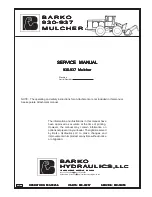
TM0497-2002
16
NACE International
10.3.2 General
Ferrous, aluminum, and copper pipelines may be
adequately cathodically protected if applying cathodic
protection causes a polarization change of 100 mV or
more with respect to a reference potential.
10.3.2.1 Current sources that can affect the
accuracy of this test method include the following:
(a)
Unknown, inaccessible, or direct-connected
galvanic anodes;
(b)
Cathodic protection systems on associated
piping or foreign structures;
(c)
Electric railway systems;
(d)
HVDC electric power systems;
(e)
Telluric currents;
(f)
Galvanic, or bimetallic, cells;
(g)
DC mining equipment;
(h)
Parallel
coated
pipelines,
electrically
connected and polarized to different potentials;
(i)
Uninterrupted current sources;
(j)
Unintentional connections to other structures
or bonds to mitigate interference; and
(k)
Long-line currents.
10.3.3 Comparison with Other Methods
10.3.3.1 Advantages
(a)
This method is especially useful for bare or
ineffectively coated pipe; and
(b)
This
method
is
advantageous
when
corrosion potentials may be low (for example, 500
mV or less negative) and/or the current required to
meet a negative 850 mV potential criterion would
be considered excessive.
10.3.3.2 Disadvantages
(a)
Additional equipment is required;
(b)
Additional time, personnel, and vehicles may
be required to set up equipment and to make the
pipe-to-electrolyte potential measurements; and
(c)
Test results are difficult or impossible to
analyze when stray currents are present or when
direct-connected
galvanic
anodes
or
foreign
impressed currents are present and cannot be
interrupted.
10.3.4 Basic Test Equipment
10.3.4.1 Voltmeter
with
adequate
input
impedance.
Commonly used digital instruments
have a nominal impedance of 10 megaohms. An
analog instrument with an internal resistance of
100,000 ohms per volt may be adequate in certain
circumstances in which the circuit resistance is
low. A potentiometer circuit may be necessary in
other instances.
10.3.4.2 Two color-coded meter leads with clips
for connection to the pipeline and reference
electrode.
10.3.4.3 Sufficient current interrupters to interrupt
influential cathodic protection current sources
simultaneously.
10.3.4.4 Reference electrode
10.3.4.4.1 CSE.
10.3.4.4.2 Other
standard
reference
electrodes may be substituted for the CSE.
These reference electrodes are described in
Appendix A, Paragraph A2.
10.3.5 Procedure
10.3.5.1 Before the test, verify that cathodic
protection equipment has been installed but is not
operating.
10.3.5.2 Determine the location of the site to be
tested. Selection of a site may be based on:
(a)
Location accessible for future monitoring;
(b)
Other protection systems, structures, and
anodes that may influence the pipe-to-electrolyte
potential;
(c)
Electrical
midpoints
between
protection
devices;
(d)
Known location of an ineffective coating if
the line is coated; and
(e)
Location of a known or suspected corrosive
environment.
10.3.5.3 Make electrical contact between the
reference electrode and the electrolyte at the test
site, directly over the centerline of the pipeline or
as close to it as is practicable.
10.3.5.3.1 Identify
the
location
of
the
electrode to allow it to be returned to the
same location for subsequent tests.
10.3.5.4 Connect the voltmeter to the pipeline and
reference electrode as described in Paragraph
5.6.
10.3.5.5 Measure
and
record
the
pipe-to-
electrolyte corrosion potential and its polarity with
respect to the reference electrode.
10.3.5.5.1 This potential is the value from
which the polarization formation is calculated.
10.3.5.6 Apply the cathodic protection current.
Time should be allowed for the pipeline potentials
to reach polarized values.
Содержание CP 1
Страница 1: ...CP 1 Cathodic Protection Tester Course Manual February 2005 NACE International 2000 ...
Страница 265: ......
Страница 266: ......
Страница 267: ......
Страница 268: ......
Страница 301: ...RP0169 2002 32 NACE International ISBN 1 57590 035 1 ...
Страница 535: ...TM0101 2001 24 NACE International ISBN 1 57590 137 4 ...
















































